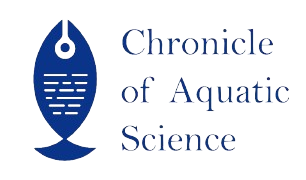| File | Action |
|---|---|
| Role of Gut Microbes on Growth and Health of Fish | Download |
- 919088951040 call us
- chronicleofaquaticscience@gmail.com Mail us
CoASV3IS102
Role of Gut Microbes on Growth and Health of Fish
Minal Wagde, Manish Jayant*, Ashwini Arambam and Bidyasagar Sanjenbam
Abstract
The gut microbiome of fish is essential for their overall health, immunity, and digestion. Despite its importance, fish gut microbes are less studied compared to those of
ruminants. This microbiome comprises both autochthonous and allochthonous bacteria and differs based on species, diets, and habitats. For example, freshwater fish commonly contain genera such as Aeromonas and Clostridium, while marine species typically host Vibrio and Micrococcus. The increasing use of plant-protein-based aquafeeds has raised concerns about anti-nutritional factors (ANFs) that may disrupt gut health and the composition of the microbiota, which can, in turn, affect fish immunity and growth. Microbial populations are known to adapt to their gut environments, which are influenced by factors like pH gradients and the developmental stages of the fish, playing vital roles in digestion, nutrient metabolism, and immune regulation. Probiotics, such as Lactobacillus and Bacillus, contribute positively to gut health by competing against pathogens, producing antimicrobial substances, and bolstering the gut-associated lymphoid tissue (GALT). However, while plant-based feeds can change gut structure and microbial balance, potentially leading to dysbiosis, the addition of probiotics can help alleviate these issues. Understanding gut microbiomes is critical for sustainable aquaculture, as it allows for the optimization of fish diets. Future research should focus on exploring how microbial-host-environment interactions work, the ways microbes contribute to fish health, and the development of customized microbiota suited for various aquaculture systems to boost fish resilience and productivity.
ruminants. This microbiome comprises both autochthonous and allochthonous bacteria and differs based on species, diets, and habitats. For example, freshwater fish commonly contain genera such as Aeromonas and Clostridium, while marine species typically host Vibrio and Micrococcus. The increasing use of plant-protein-based aquafeeds has raised concerns about anti-nutritional factors (ANFs) that may disrupt gut health and the composition of the microbiota, which can, in turn, affect fish immunity and growth. Microbial populations are known to adapt to their gut environments, which are influenced by factors like pH gradients and the developmental stages of the fish, playing vital roles in digestion, nutrient metabolism, and immune regulation. Probiotics, such as Lactobacillus and Bacillus, contribute positively to gut health by competing against pathogens, producing antimicrobial substances, and bolstering the gut-associated lymphoid tissue (GALT). However, while plant-based feeds can change gut structure and microbial balance, potentially leading to dysbiosis, the addition of probiotics can help alleviate these issues. Understanding gut microbiomes is critical for sustainable aquaculture, as it allows for the optimization of fish diets. Future research should focus on exploring how microbial-host-environment interactions work, the ways microbes contribute to fish health, and the development of customized microbiota suited for various aquaculture systems to boost fish resilience and productivity.
Keywords
Gut microbiom, immunity, probiotics, plant-based feed, Aquaculture
Reference
Banerjee, S., Mukherjee, A., Dutta, D. and Ghosh, K., (2019). Evaluation of chitinolytic gutmicrobiota in some carps and optimization of culture conditions for chitinase
production by the selected bacteria. Journal of Microbiology, Biotechnology and Food Sciences, 5(1): 12-19.
Bhatnagar, A. and Lamba, R., (2015). Antimicrobial ability and growth promoting effects of feed supplemented with probiotic bacterium isolated from gut microflora of
Cirrhinusmrigala. Journal of Integrative Agriculture, 14(3): 583-592.
Duca, F.A., Swartz, T.D., Sakar, Y. and Covasa, M. (2012). Increased oral detection, but decreased intestinal signaling for fats in mice lacking gut microbiota. PLoS
One, 7(6): e39748.
Dahiya, T., Gahlawat, S.K. and Sihag, R.C., 2012.Elimination of pathogenic bacterium (Micrococcus sp.) by the use of probiotics.Turkish Journal of Fisheries and Aquatic Sciences, 12(1): 185-187.
Efendi, Y. and Yusra (2014). Bacillus subtilis strain VITNJ1 potential probiotic bacteria in the gut of tilapia (Oreochromisniloticus) are cultured in floating net, Maninjaulake, West Sumatra. Pakistan Journal of Nutrition, 13(12), pp.710-715.
production by the selected bacteria. Journal of Microbiology, Biotechnology and Food Sciences, 5(1): 12-19.
Bhatnagar, A. and Lamba, R., (2015). Antimicrobial ability and growth promoting effects of feed supplemented with probiotic bacterium isolated from gut microflora of
Cirrhinusmrigala. Journal of Integrative Agriculture, 14(3): 583-592.
Duca, F.A., Swartz, T.D., Sakar, Y. and Covasa, M. (2012). Increased oral detection, but decreased intestinal signaling for fats in mice lacking gut microbiota. PLoS
One, 7(6): e39748.
Dahiya, T., Gahlawat, S.K. and Sihag, R.C., 2012.Elimination of pathogenic bacterium (Micrococcus sp.) by the use of probiotics.Turkish Journal of Fisheries and Aquatic Sciences, 12(1): 185-187.
Efendi, Y. and Yusra (2014). Bacillus subtilis strain VITNJ1 potential probiotic bacteria in the gut of tilapia (Oreochromisniloticus) are cultured in floating net, Maninjaulake, West Sumatra. Pakistan Journal of Nutrition, 13(12), pp.710-715.
Falcinelli, S., Rodiles, A., Hatef, A., Picchietti, S., Cossignani, L., Merrifield, D.L., Unniappan, S. and Carnevali, O. (2018). Influence of probiotics administration on gut microbiota core: a review on the effects on appetite control, glucose, and lipid metabolism. Journal of Clinical Gastroenterology, 52: S50-S56.
Francis, G., Makkar, H.P. and Becker, K. (2001).Antinutritional factors present in plant-derived alternate fish feed ingredients and their effects in fish. Aquaculture, 199(3-4):197-227.
Fetissov, S.O. (2017). Role of the gut microbiota in host appetite control: bacterial growth to animal feeding behaviour. Nature Reviews Endocrinology. (2017) 13:11–25.
Ghosh, K., Ray, A.K. and Ringo, E. (2019). Applications of plant ingredients for tropical and subtropical freshwater finfish: possibilities and challenges. Reviews in Aquaculture, 11(3): 793-815.
Gomez, G.D. and Balcazar, J.L. (2008). A review on the interactions between gut microbiota and innate immunity of fish. FEMS Immunology and Medical Microbiology, 52:145–154.
Hoseinifar, S.H., Esteban, M.Á., Cuesta, A. and Sun, Y.Z. (2015). Prebiotics and fish immune response: a review of current knowledge and future perspectives. Reviews in Fisheries Science & Aquaculture, 23(4): 315-328.
Ibrahem, M.D. (2015). Evolution of probiotics in aquatic world: Potential effects, the current status in Egypt and recent prospectives. Journal of advanced Research, 6(6): 765-791.
Kim, J.S. and Claire, B., (2018). Diet, gut microbiota composition and feeding behavior. Physiology &Behavior, 192, pp.177-181.
Lee, Y.K. and Mazmanian, S.K., 2010. Has the microbiota played a critical role in the evolution of the adaptive immune system? Science, 330(6012): 1768-1773.
Francis, G., Makkar, H.P. and Becker, K. (2001).Antinutritional factors present in plant-derived alternate fish feed ingredients and their effects in fish. Aquaculture, 199(3-4):197-227.
Fetissov, S.O. (2017). Role of the gut microbiota in host appetite control: bacterial growth to animal feeding behaviour. Nature Reviews Endocrinology. (2017) 13:11–25.
Ghosh, K., Ray, A.K. and Ringo, E. (2019). Applications of plant ingredients for tropical and subtropical freshwater finfish: possibilities and challenges. Reviews in Aquaculture, 11(3): 793-815.
Gomez, G.D. and Balcazar, J.L. (2008). A review on the interactions between gut microbiota and innate immunity of fish. FEMS Immunology and Medical Microbiology, 52:145–154.
Hoseinifar, S.H., Esteban, M.Á., Cuesta, A. and Sun, Y.Z. (2015). Prebiotics and fish immune response: a review of current knowledge and future perspectives. Reviews in Fisheries Science & Aquaculture, 23(4): 315-328.
Ibrahem, M.D. (2015). Evolution of probiotics in aquatic world: Potential effects, the current status in Egypt and recent prospectives. Journal of advanced Research, 6(6): 765-791.
Kim, J.S. and Claire, B., (2018). Diet, gut microbiota composition and feeding behavior. Physiology &Behavior, 192, pp.177-181.
Lee, Y.K. and Mazmanian, S.K., 2010. Has the microbiota played a critical role in the evolution of the adaptive immune system? Science, 330(6012): 1768-1773.
- Published online
- 15th March, 2025
How to Cite the Article
Wagde M, Jayant M, Arambam A and Sanjenbam B. Role of Gut Microbes on Growth and Health of Fish. Chron Aquat Sci. 2025; 3(1):6-9
Copyright
This is an open-access article distributed under the terms of the Creative Commons Attribution License (CC BY). The use, distribution or reproduction in other forums is permitted, provided the original author(s) and the copyright owner(s) are credited and that the original publication in this journal is cited, in accordance with accepted academic practice. No use, distribution or reproduction is permitted which does not comply with these terms.

CoASV3IS102


